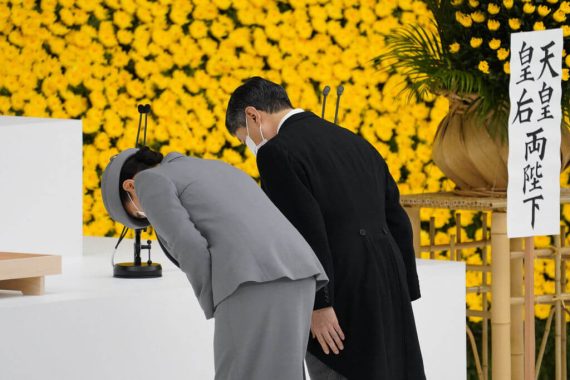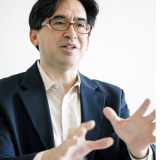As COVID19 was declared a global pandemic and started to impact public health systems, many countries rushed to close their borders to foreign visitors to stem the spread of the coronavirus. Japan, however, went one step further than most, banning not only foreign visitors, but even foreign residents from re-entering the country.
For example, foreign nationals who had lived twenty years in Japan who went abroad to visit family (or who happened to be abroad when the new measures went into effect) were prohibited from returning, in many cases losing their jobs and their homes. Even spouses of Japanese nationals were unable to return to Japan. At the same time, Japanese nationals who may have lived abroad for twenty years could swan into the country without any serious restrictions. The situation would have been almost comical, had it not been overtly discriminatory. However, there was barely a peep of protest within the country.
Measures targeting foreign national residents were finally rescinded in September 2020, after many diplomatic protests. However, foreigners who had not yet taken up residency were still barred, meaning, for example, highly qualified students and workers waiting to come to Japan continued to be left in limbo. Not surprisingly, many simply gave up, and went to other, more welcoming countries. Restrictions were finally eased for “exceptional cases” in November 2021, but new arrivals still had to fulfill excessive requirements that were clearly designed to make sure people could not take advantage of the new “exceptions” in practice.
For example, from November 2021, fully vaccinated foreigners could come to Japan for business purposes – only for business purposes – self-isolating “exceptionally” for three days instead of the usual fourteen. However, this was only if their business partner agreed to meet them at the airport, ensured they did not use public transport for the full fourteen days, and submitted beforehand a detailed plan of the visitor’s movements covering the entire two-week period. Approval by the government for all of this could take up to a month. People who were not partnering with a large institution that could handle these administrative demands were simply out of luck.
Even the normally diplomatic WHO was forced to make sarcastic remarks about Japan’s measures, pointing out that viruses do not read passports or choose their victims according to where they have legal residency.
In any case, as the Omicron variant emerged, after only three weeks all of these “exceptions” were frozen, and foreign visitors (though not residents this time) have once again been banned. Even the normally diplomatic WHO was forced to make sarcastic remarks about Japan’s measures, pointing out at a press conference that viruses do not read passports or choose their victims according to where they have legal residency. However, according to one poll, the measures are supported by 89 percent of the population.
Sakoku: The closing of the country
Of course, Japan is hardly unique in taking extreme measures against COVID19. However, the current situation must be viewed within the context of the xenophobia that is arguably fundamental to the Japanese psyche.
Students of Japanese history will know that the Tokugawa military government closed the country to foreign nationals, foreign trade, and generally all relations with foreign countries in the early 1600s. Exchanges with foreign countries did take place – mainly with China and with the Dutch, who promised not to proselytize as the government believed Christianity to be a major threat – but they were strictly controlled by the government, with foreigners isolated in a specially constructed island.
The Japanese were prohibited from traveling abroad, and those who were abroad at the time were banned from returning, lest they be contaminated by foreign ideas. This period of sakoku, or “closed country,” lasted for more than 200 years, until Japan was essentially forced to re-open at gunpoint by American warships in 1853.
What followed the re-opening of the country was a frantic period of modernization and Westernization. Japan was of course extraordinarily successful at this endeavor and quickly emerged as a regional power, but it is important to note that the import of foreign ideas and institutions remained strictly controlled. Japan adopted Western systems, but always only to the extent they suited the country at the time.
Selected foreign advisors were welcomed for their expertise, but only if their reforms did not challenge the fundamental power structures of Japanese society. The elite ran a tight ship in steering the process, and would tap the brakes whenever they felt things had gone too far.
Therefore, the general underlying attitude of both the sakoku era and the modernization period was basically constant: foreign matter (people, influences, ideas, etc.) was inherently suspect. It was to be allowed into Japan only to the extent it would be clearly advantageous for the country; otherwise, it must be shut out.
The bubble economy and ongoing “sakoku”
All of a sudden, Japan was number one, and no longer had anything to learn from the West – or from anyone.
Whether that was the right approach at the time is debatable, but at least there was willingness to learn from other countries and regions. This changed in the 1980s, with the “bubble” economy. Exporters poured profits into real estate and stock speculation, and a strong yen allowed Japanese to travel and indulge in luxuries only dreamt of before.
All of a sudden, Japan was number one, and no longer had anything to learn from the West – or from anyone. There was no need to import foreign ideas, and certainly not foreigners themselves, except for the undocumented laborers and foreign “interns” who worked (and still work) as virtual slaves.
Recommended
The bubble burst in 1991, ushering in a period of economic decline that continues to this day. Japan has been overcome in economic size by China, and – a fact not widely reported in Japan, presumably because the reality is too humiliating to face – by Korea in terms of average income. The Japanese elite remain frozen, incapable of pushing forward any meaningful reform.
Extremely rigid hiring practices have resulted in a massive increase in persons in precarious employment (currently 40 percent of the workforce). Academia is ineffectual, with Japan’s internationally low-ranking universities incapable of producing free-thinking, innovative graduates. The level of English ability and of public interest in international affairs and in foreign countries, in general, is plummeting.
Academia is ineffectual, with Japan’s internationally low-ranking universities incapable of producing free-thinking, innovative graduates.
Finding fertile soil, bullish, aggressive nationalism has been on the rise. Since at least the early 2000s, Japanese popular culture (books, magazines, television, internet, etc.) has been inundated with output of the “Japan is amazing!” genre. The genre is dedicated to presenting Japan as (still) economically and socially superior to the rest of the world and arguing that pessimism is unwarranted. Many of those books and programs are downright delusional, relying on “racial superiority” type claims of the inherently moral character of the Japanese people.

VIDEO: Why the Far-Right is Rising Globally – Commonalities (Part 2)
In recent years, these media outputs have been taking a more sinister turn, focusing on criticisms (justified and otherwise) of China and Korea in a transparent attempt at elevating Japan in contrast. Left-leaning media and human rights organizations are also targeted for abuse, and branded as “anti-Japanese” – a situation strikingly similar to the wartime years.
During his reign as prime minister from 2012 to 2020, Shinzo Abe did his utmost to fan these nationalistic flames: refusing to accept responsibility for Japan’s wartime atrocities, promoting militarism, and attempting to have schoolchildren marked on the level of their patriotism, to name but a few. The successive two prime ministers have been less overt, but the Liberal Democratic Party (LDP), from which they all come, is full of extremists with similar views. And the populace, fed a near constant diet of nationalistic propaganda, is as compliant – perhaps even willing – as can be.
In many ways, Japan seems to be reverting to a “sakoku” state: insular, inward-looking, and ever more xenophobic. Completely closing the borders like in the 17th century is of course not feasible, but the “sakoku” mental state is much more insidious. Japan may be incapable of overcoming this malaise, meaning even further decline.





